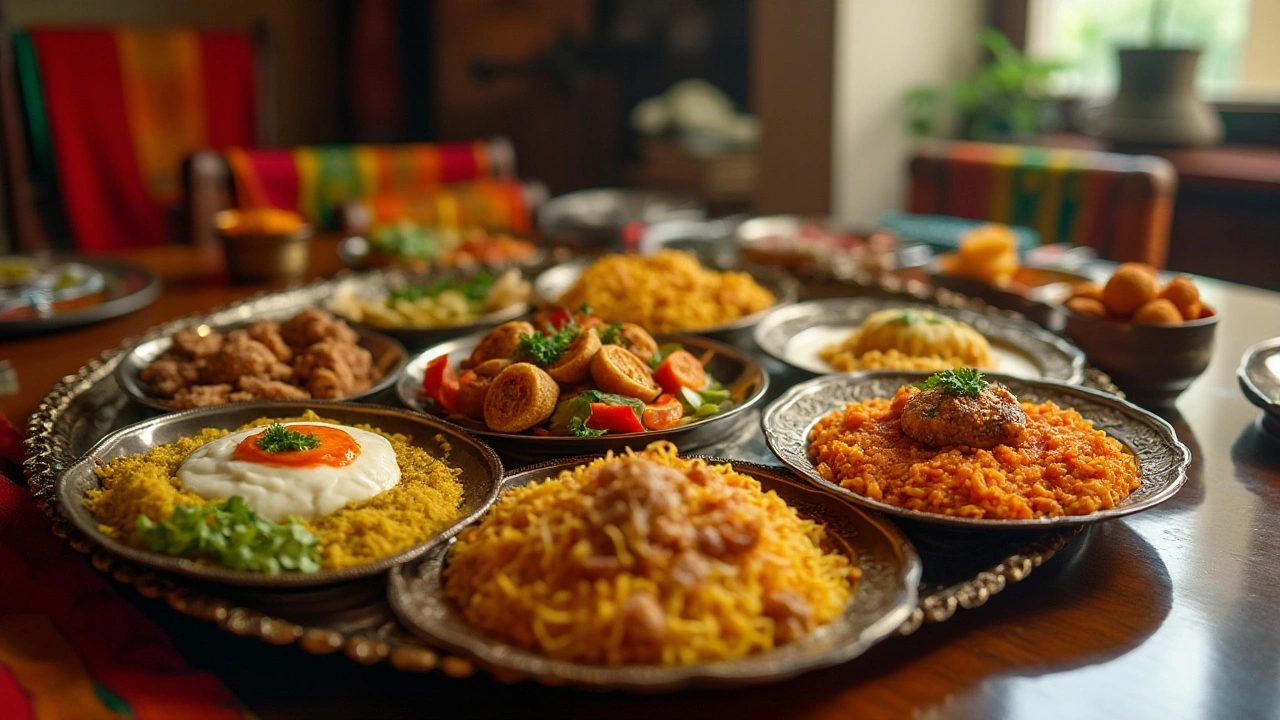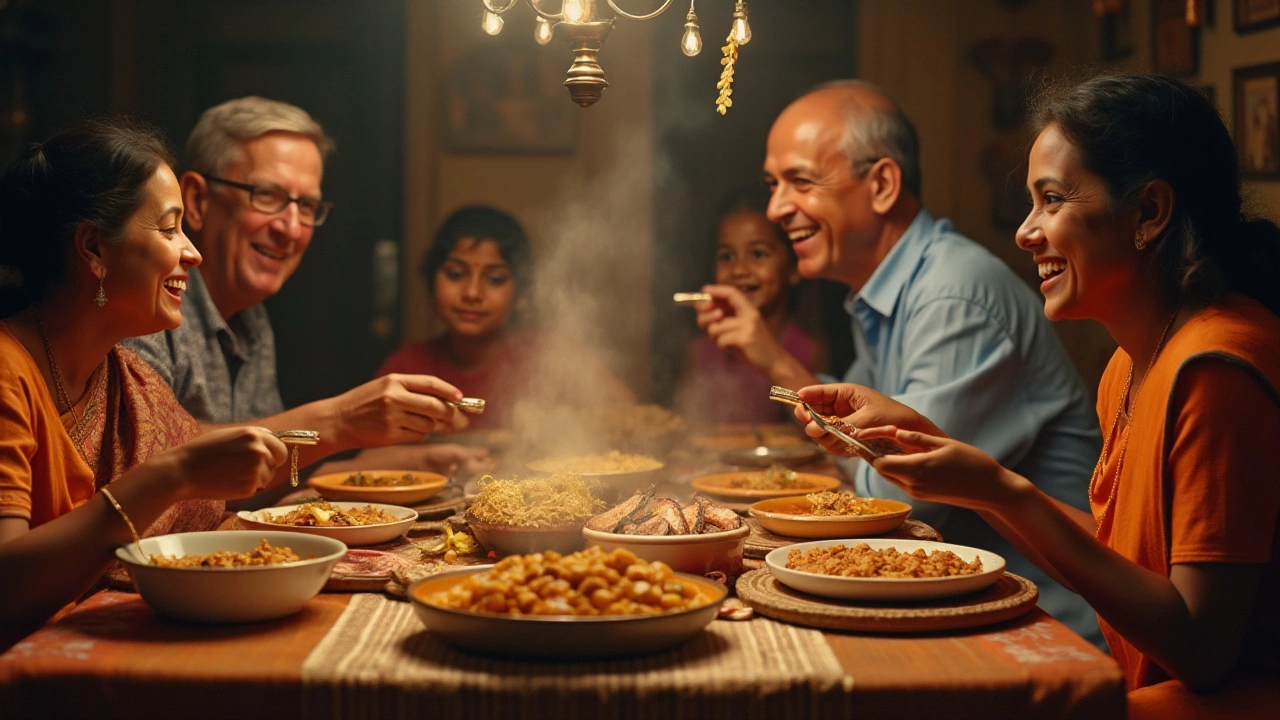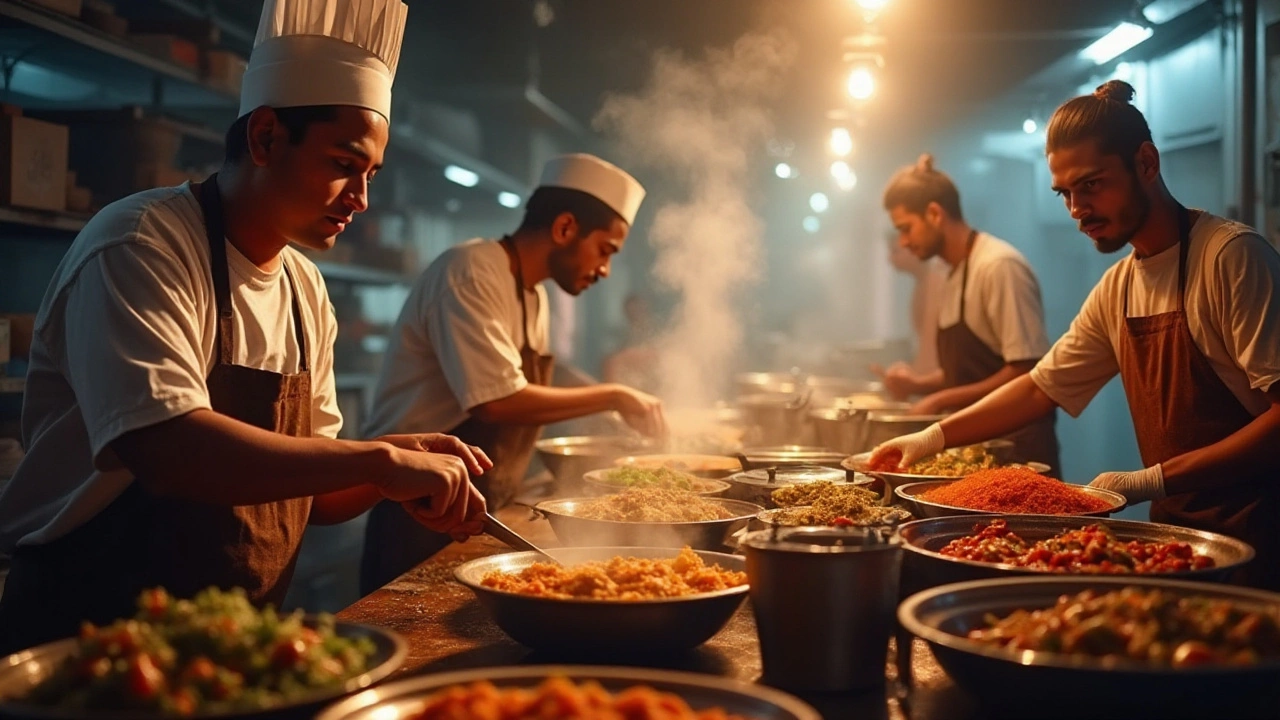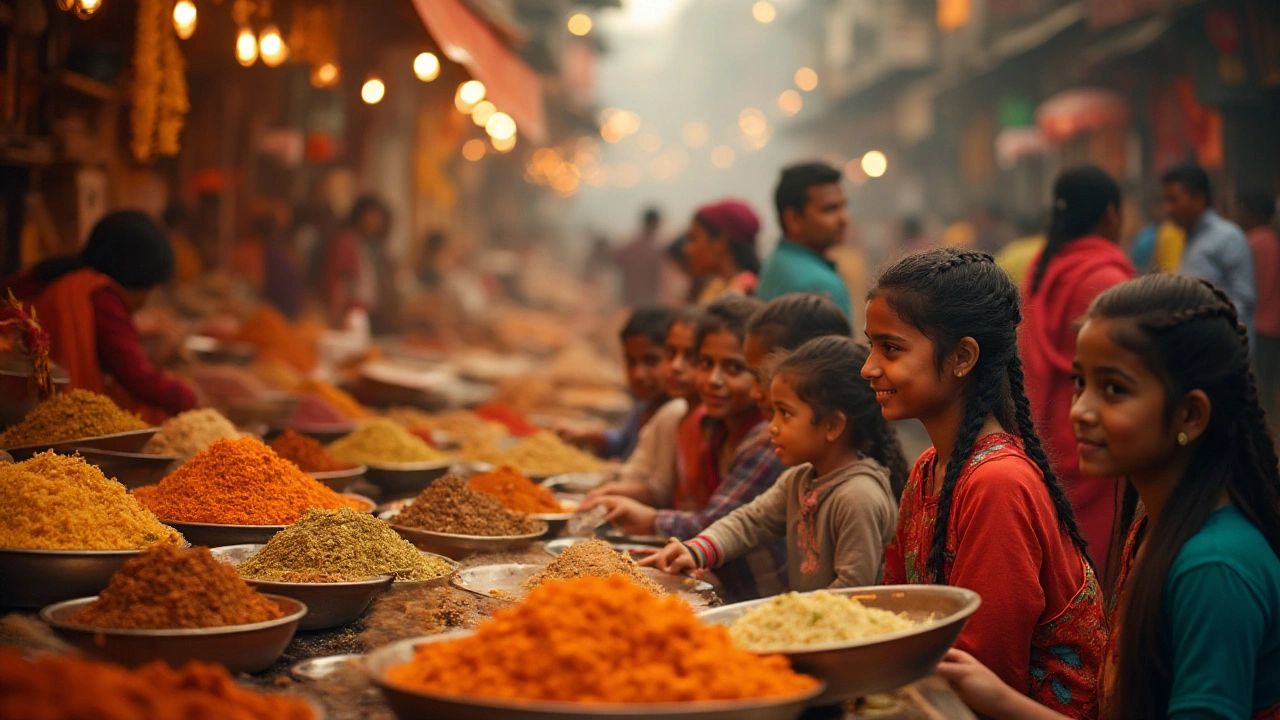The vibrant country of Bangladesh is renowned for its rich cultural heritage and fascinating traditions. Amongst these is an intricate culinary tapestry that has captivated food enthusiasts around the world. At the heart of this diverse spread lie dishes that are not just meals but an experience, intertwining with the cultural festivals of the region.
As you delve into these sumptuous delicacies, you will find flavors that are at once exotic and comforting. Each dish tells a story—of ancient recipes, local ingredients, and the celebrations that bring people together. From the bustling streets of Dhaka to the serene villages, the aroma of Bengali cuisine is a testament to the country's love for food and festivity.
Whether it's a joyous Eid feast or the colorful celebration of Durga Puja, food plays an essential role in marking these occasions. Join me as we explore the beloved foods that define Bangladesh’s culinary identity and learn a few tips to savor them like a local.
- The Essence of Bengali Cuisine
- Popular Dishes in Festivals
- The Cultural Significance of Food
- Tips for Enjoying Bengali Food
The Essence of Bengali Cuisine
When one thinks of Bengali cuisine, the mind often conjures images of elaborate feasts punctuated by rich spices and tantalizing aromas. With roots deeply embedded in the fertile lands of the Ganges Delta, the food of Bangladesh is a splendid marriage of flavors, textures, and colors. The cuisine's core is its simplicity which, paradoxically, allows complex and sophisticated flavors to shine through. Staple ingredients like rice and fish play a pivotal role, creating a foundation for an array of sumptuous dishes that transcend mere sustenance. From the rustic panta bhat, a traditional dish of fermented rice, to the luscious hilsa fish curry, each bite feels like a celebration of local produce and time-honored cooking techniques.
One cannot discuss the essence of Bengali food without acknowledging the use of mustard oil, which imbues dishes with a unique pungency and zest. The oil acts not only as a cooking medium but also as a flavor enhancer, making it indispensable in classic dishes such as shorshe ilish where the hilsa fish is elegantly bathed in a mustard sauce. Alongside this, lentils, or dal, form an everyday part of the meal, bringing both warmth and comfort. To the uninitiated, the Bengali thali might seem a dizzying array of elements, yet it is this multiplicity that defines the cuisine. In this land, a meal is often a carefully orchestrated symphony of tastes ranging from the sweet to the bitter and the spicy to the sour.
"In Bengali cuisine, each dish is a chapter of a story which tells of the land, the people, and their festivities," noted culinary historian Chitrita Banerji in her acclaimed text on the region's food culture.
During grand celebrations and festivals, like Durga Puja and Pohela Boishakh, this culinary tapestry is further enriched with iconic Bangladesh food presentations such as biryani, where basmati rice cuddles tender meat pieces, each grain flavoured with a subtle blend of spices. Such celebratory dishes often come accompanied by a melange of pithe and payesh, traditional sweets made from rice flour and milk that delight the palate and soul alike. It is a time when the best culinary skills are put to the test, blending inherited recipes with modern nuances.
The brilliance of Bengali cuisine lies in its flexibility, adapting to the seasons and the local produce with grace. Its essence is a testament to centuries of evolution complemented by trade exchanges that have incorporated influences from Mughal, British, and even Chinese techniques and ingredients. Whether you are exploring the bustling street food scene of Dhaka or experiencing the simpler rural offerings, the cuisine unfurls as a journey through the country’s rich tapestry of culture, history, and the ever-present joy of feasting with family and friends.

Popular Dishes in Festivals
The colorful festivals of Bangladesh are a feast not only for the eyes but for the palate as well. Amongst the myriad of dishes that grace the tables during these celebrations, each is steeped in tradition, bursting with beautiful flavors, and meticulously prepared. One cannot talk about Bengali cuisine without mentioning the iconic Biryani. This dish, particularly popular during Eid and weddings, is a fragrant combination of rice, meat, and a harmonious blend of spices. It is often considered a centerpiece of festive meals, bringing families and communities together in celebration.
Another beloved dish is Hilsa Fish Curry, often prepared during the Monsoon season and Poila Boishakh, the Bengali New Year. Hilsa, revered as the national fish of Bangladesh, boasts luscious, crescent-shaped fillets cooked in a thick gravy made of mustard paste. The dish pairs perfectly with steamed rice and makes the seasonal gatherings more special. Durga Puja, a major festival celebrated with immense pomp, sees the preparation of a vast array of vegetarian delights as part of the celebrations.
Sweet treats also play a pivotal role during festivals. Roshogolla and Sandesh are not mere desserts; they are declarations of the country's sweet heritage. Each festival concludes with a sweet note, symbolizing the joy and abundance the occasion brings. Renowned chef, Asma Khan, once expressed,
"In Bangladesh, food is more than just sustenance; it’s a cultural stamp passed down through generations."Her words perfectly encapsulate the significance of these culinary wonders in the tapestry of Bangladeshi festivals.
Festivals often serve as a platform for showcasing the diversity of Bengali food. From savory dishes like Panta Ilish, a traditional dish enjoyed during the Bengali New Year, to the intricate Chhena Poda, the passion for food during festivals becomes palpable. Many of these dishes require days of preparation, instilling a sense of anticipation and community involvement in their making. The festivities serve to strengthen the bonds within communities, all courtesy of the shared love for culinary craftsmanship.

The Cultural Significance of Food
The role of food in Bangladesh transcends more than just provision of sustenance; it is an integral expression of identity and community binding. It embodies an entire culture—its traditions, norms, and reflections of history—served on a platter. In Bengali culture, shared meals are not merely about satiating hunger but about a celebration of togetherness. The table becomes a gathering point, where families connect, share stories, and keep traditions alive through their age-old recipes.
Food in Bangladesh harmonizes with many cultural and religious festivals, where dishes are both symbols of love and offerings to the divine. Eid-al-Fitr, for instance, a celebration marking the end of Ramadan, is synonymous with the preparation of extravagant feasts. Households prepare sumptuous Biryani and various types of Kebabs, alongside the sweet-scented Firni dessert. This bounty of traditional food helps forge emotional connections while reinforcing familial bonds.
Earlier, Rabindranath Tagore encapsulated the connection between food and culture beautifully:
"The journey of a nation appears on its plate; the resonance of every joy and sorrow cherished within every bite."It highlights how every dish tells a narrative—of seasons, local produce, and influences borrowed from Persian, Turkish, and Mughal cuisines that have touched the region over centuries.
Another magnificent cultural celebration, Durga Puja, showcases the beautiful intersection of celebration and food. It’s a festival where traditional fare takes center stage. Families gather to prepare elaborate meals with staple Bengali cuisine that include dishes like Hilsa fish curry and fragrant rice served with an array of sides. These dishes are often cooked with traditional yet simple ingredients that capture the essence of the land itself.
A unique aspect of Bangladesh's culinary tradition is the profound respect for nature’s rhythm. The availability of local produce shapes the culinary repertoire. Rice fields, lakes brimming with fish like Hilsa and Rohu, and fragrant spices ground in every household mortar contribute to what’s prepared and shared according to seasons. This adherence to organic cycles underpins the Bangladeshi way of life and its cultural heritage.
It's also interesting to note the hospitality associated with the sharing of food in Bangladesh. The saying "A guest is sent by God" epitomizes the warmth extended to visitors. Food becomes a remarkable bridge linking different generations and is often the precursor to lifelong friendships. It’s an unwritten rule that distances would be covered, and fortunes spent, just to ensure a visitor leaves the table satisfied and with a peek into the vibrant Bengali culture.

Tips for Enjoying Bengali Food
Embracing the world of Bengali cuisine begins with an open heart and an adventurous palate. To truly savor the essence of Bangladesh's culinary offerings, you must immerse yourself in the sensory experiences these dishes provide. First and foremost, take the time to explore local restaurants or food markets. Here, you can witness firsthand the vibrant colors and enticing aromas that define this rich tradition. You'll often find cooks meticulously crafting each dish using a medley of spices that balance heat, flavor, and aroma. Rather than rushing your meal, take a moment to appreciate the intricate flavors that unfold with every bite.
When experiencing Bengali food during cultural festivals, try to partake in traditional eating practices. Bengalis often use their hands to eat, which adds an intimate connection to the food and enhances the dining experience. This might feel uncomfortable at first for some, but you'll quickly discover how it allows you to better appreciate staple dishes such as bhuna khichuri or luchi. Eating with your hands is an art that involves delicately mixing flavors on your plate and intuitively combining ingredients.
Pairing your meal with the right accompaniment is also crucial. Most Bengali dishes are served with plain basmati rice, a perfect canvas for the bold flavors of curries and sides. Balancing spice levels is important, so always have a cooling dairy product like yogurt on hand, or a glass of 'lassi,' a sweet or salted yogurt-based drink. To complement fiery dishes, this provides a cooling effect, making it an enriching way to tailor the spiciness to your taste.
If you're keen to replicate the experience at home, start by acquiring authentic spices. These include cumin, coriander, turmeric, and the celebrated ‘panch phoron,’ a five-spice blend that is foundational in many recipes. Experimentation is key. Explore online resources or cookbooks dedicated to the region's cuisine for inspiration. Pay attention to noted chefs from the region who share valuable insights into perfecting techniques. As renowned chef Saptarshi Haleem once noted,
"The secret to a great Bengali dish lies not in the complexity of ingredients, but in the harmony in which they blend."
For a fully immersive experience, pair your meal with exquisite tea from Bengal, like the famous Darjeeling or Sylheti tea, appreciated by locals and travelers alike. During dessert, you may try sweets like 'rasgulla' or 'sandesh,' often infused with rich jaggery for a unique sweetness. Remember, every dish is part of a larger cultural narrative, and sharing these meals with friends or family can further deepen your appreciation.
